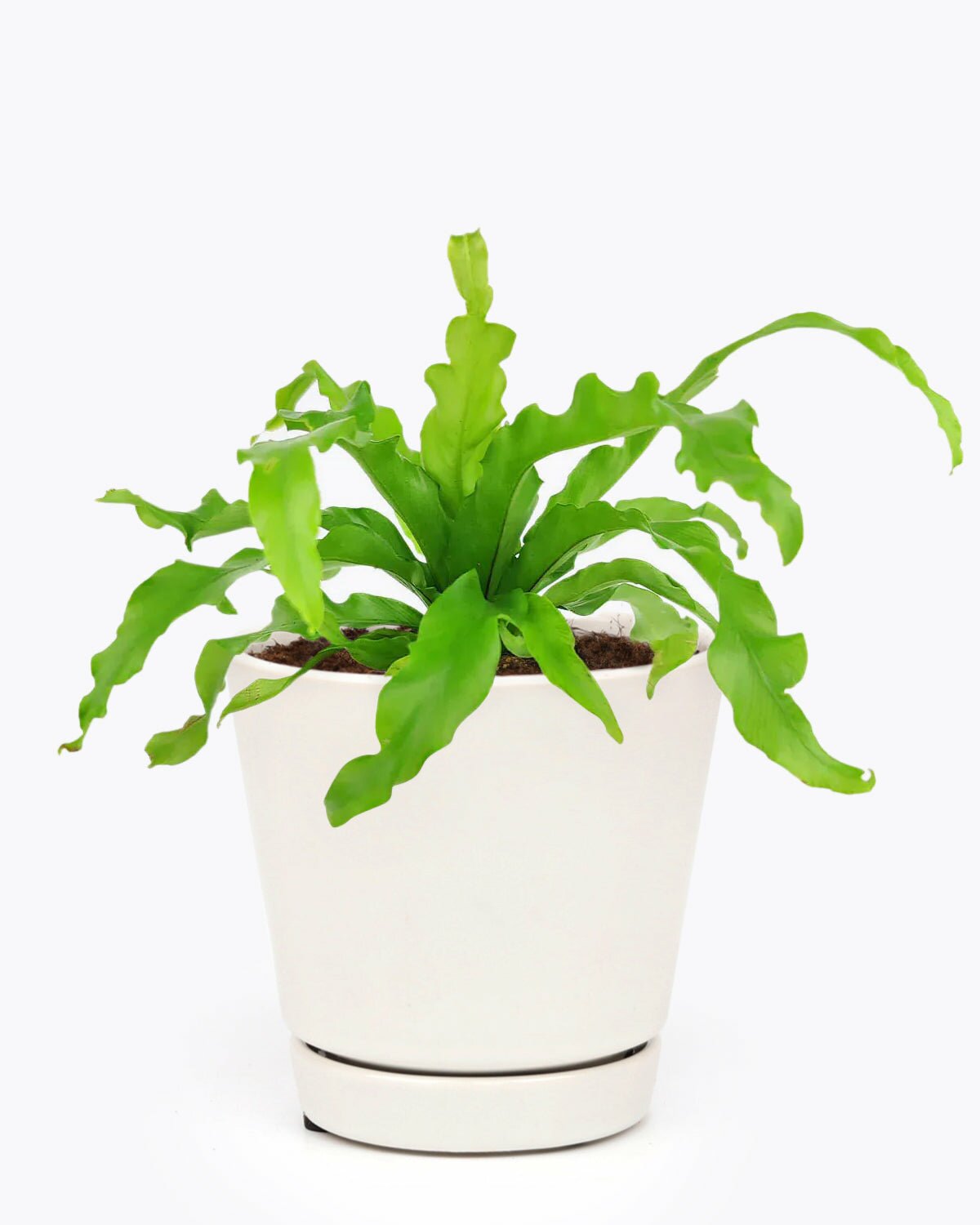Ferns have gained immense popularity as houseplants, thanks to their ability to thrive in low-light conditions, making them an excellent choice for modern buildings. Their minimal upkeep requirements make them ideal for our busy lifestyles. As some of the oldest plants on Earth, ferns possess a rich and fascinating history. Ferns can be found in various habitats worldwide, from tropical rainforests to temperate forests and even arid regions. The fern genus is incredibly diverse, with thousands of known species, offering a wide range of forms, sizes, and growth habits.
One of the distinctive features of ferns is their large, compound leaves known as fronds. These fronds add a touch of elegance to any space and can purify the indoor air. Caring for ferns is fairly easy, making them one of the best plants even for beginners.
Popular Fern plants include Bird's Nest Fern, Boston Fern, Crissie Fern, Japanese Fern, and more.
Do Ferns need direct sunlight?
Ferns are very versatile. They grow the fastest with prefer bright, indirect light, but they also thrive in low-light conditions. Avoid exposing them to direct sunlight, as it can scorch their delicate fronds. If your fern shows signs of yellowing or browning leaves, it may be receiving too much light. On the other hand, if the leaves appear pale and stretched, they may need a bit more light.
Do Ferns need a lot of water?
Ferns prefer consistently moist soil, but they are also susceptible to root rot if overwatered. The key is to keep the soil evenly moist without allowing it to become waterlogged. Water your fern when the top inch of soil feels slightly dry to the touch. Water thoroughly, allowing excess water to drain out of the pot. Discard any water that collects in the saucer or tray to prevent soggy roots.
What is the best soil mix for potted Ferns?
Ferns thrive in well-draining, organic-rich soil. A suitable potting mix for ferns consists of a combination of peat moss, perlite, and well-decomposed compost. This mixture provides good drainage while retaining moisture and nutrients. Avoid using heavy soils that retain water, as they can lead to root rot.
What temperature can Ferns tolerate?
Most ferns prefer temperatures between 60°F - 75°F. Avoid exposing them to cold drafts, extreme heat, or sudden temperature fluctuations. Keep them away from heaters, air conditioning vents, and open windows during chilly weather. Consistent temperatures and stable conditions will help your ferns thrive.
How do I increase humidity in Ferns?
Ferns are native to tropical and subtropical regions, where they enjoy high humidity. To recreate their natural habitat, it's essential to provide adequate humidity for your ferns. You can increase humidity by misting the fronds regularly, placing a tray of water near the plant, or using a humidifier. Another effective method is to create a pebble tray by placing a layer of pebbles in a tray and adding water. Set the potted fern on top of the pebbles, ensuring the water level is below the pot's bottom to avoid waterlogging.
How do you fertilize a Fern plant?
Ferns have modest nutritional needs and benefit from regular but light feeding. Use a balanced, water-soluble fertilizer specifically formulated for houseplants. Dilute the fertilizer to half the recommended strength and apply it every two to four weeks during the growing season (spring and summer). Reduce or halt fertilization during winter when ferns enter a dormant phase.
When should I repot my Ferns?
Ferns generally prefer to be slightly root-bound, so avoid using excessively large pots. Repot your fern when it becomes noticeably root-bound, usually every two to three years. Choose a pot that is one size larger and provides drainage holes. When repotting, use a well-draining potting mix suitable for ferns. Gently loosen the roots and remove any dead or damaged fronds before placing the fern in the new pot.
Can Ferns reproduce by forming spores?
Ferns do not produce flowers and seeds, and they reproduce mainly by spores. Spore propagation involves collecting mature fronds with ripe sporangia, allowing the spores to release, and collecting them in a bag naturally. These spores are then sprinkled onto a germination medium in a container, covered, and placed in a warm, bright location. Regular misting helps the tiny fern gametophytes to develop, which can later be transferred to individual pots. Division is another method where the rhizome is carefully separated into sections, ensuring each division has a portion of the rhizome, fronds, and roots. These divisions are then planted in suitable pots or garden locations, watered thoroughly, and placed in shaded areas until they establish as individual plants.
How do you prune a brown Fern?
Regular pruning helps maintain the appearance and health of your fern. Remove any dead or yellowing fronds by cutting them at the base of the stem. This allows the plant to direct its energy toward new growth. If your fern becomes too large or starts to outgrow its space, you can trim back the entire plant to encourage fresh growth.
Do Ferns get pests?
Ferns are generally resilient to pests, but occasionally they may encounter issues such as aphids, scale, or mealybugs. Inspect your fern regularly for signs of pests, such as tiny insects or sticky residue on the leaves. If pests are present, gently wipe the fronds with a damp cloth or use an insecticidal soap solution to control the infestation. Isolating the affected plant can help prevent pests from spreading to other houseplants.
Do Ferns need air?
While ferns appreciate high humidity, it's also important to provide good air circulation around the plant. Stagnant air can lead to fungal diseases or pest problems. Ensure there is adequate space between plants and avoid overcrowding them. Opening windows or using a fan to create gentle air movement can be beneficial.

 Calathea
Calathea Philodendron
Philodendron Air-Purifying Houseplants
Air-Purifying Houseplants Best Houseplants For Beginners
Best Houseplants For Beginners




















